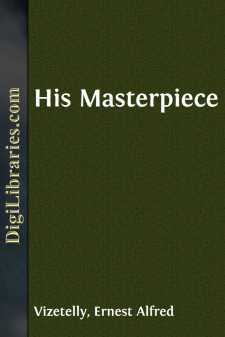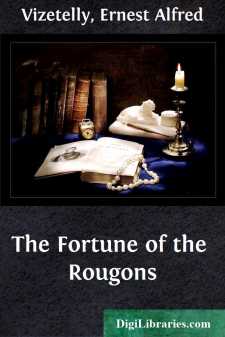Categories
- Antiques & Collectibles 13
- Architecture 36
- Art 48
- Bibles 22
- Biography & Autobiography 813
- Body, Mind & Spirit 141
- Business & Economics 28
- Children's Books 12
- Children's Fiction 9
- Computers 4
- Cooking 94
- Crafts & Hobbies 4
- Drama 346
- Education 46
- Family & Relationships 57
- Fiction 11826
- Games 19
- Gardening 17
- Health & Fitness 34
- History 1377
- House & Home 1
- Humor 147
- Juvenile Fiction 1873
- Juvenile Nonfiction 202
- Language Arts & Disciplines 88
- Law 16
- Literary Collections 686
- Literary Criticism 179
- Mathematics 13
- Medical 41
- Music 40
- Nature 179
- Non-Classifiable 1768
- Performing Arts 7
- Periodicals 1453
- Philosophy 64
- Photography 2
- Poetry 896
- Political Science 203
- Psychology 42
- Reference 154
- Religion 513
- Science 126
- Self-Help 83
- Social Science 81
- Sports & Recreation 34
- Study Aids 3
- Technology & Engineering 59
- Transportation 23
- Travel 463
- True Crime 29
Theresa Raquin
Description:
Excerpt
PREFACE
This volume, "Therese Raquin," was Zola's third book, but it was the one that first gave him notoriety, and made him somebody, as the saying goes.
While still a clerk at Hachette's at eight pounds a month, engaged in checking and perusing advertisements and press notices, he had already in 1864 published the first series of "Les Contes a Ninon"—a reprint of short stories contributed to various publications; and, in the following year, had brought out "La Confession de Claude." Both these books were issued by Lacroix, a famous go-ahead publisher and bookseller in those days, whose place of business stood at one of the corners of the Rue Vivienne and the Boulevard Montmartre, and who, as Lacroix, Verboeckhoven et Cie., ended in bankruptcy in the early seventies.
"La Confession de Claude" met with poor appreciation from the general public, although it attracted the attention of the Public Prosecutor, who sent down to Hachette's to make a few inquiries about the author, but went no further. When, however, M. Barbey d'Aurevilly, in a critical weekly paper called the "Nain Jaune," spitefully alluded to this rather daring novel as "Hachette's little book," one of the members of the firm sent for M. Zola, and addressed him thus:
"Look here, M. Zola, you are earning eight pounds a month with us, which is ridiculous for a man of your talent. Why don't you go into literature altogether? It will bring you wealth and glory."
Zola had no choice but to take this broad hint, and send in his resignation, which was at once accepted. The Hachettes did not require the services of writers of risky, or, for that matter, any other novels, as clerks; and, besides, as Zola has told us himself, in an interview with my old friend and employer,[*] the late M. Fernand Xau, Editor of the Paris "Journal," they thought "La Confession de Claude" a trifle stiff, and objected to their clerks writing books in time which they considered theirs, as they paid for it.
[*] He sent me to Hamburg for ten days in 1892 to report on
the appalling outbreak of cholera in that city, with the
emoluments of ten pounds a day, besides printing several
articles from my pen on Parisian topics.—E. V.
Zola, cast, so to say, adrift, with "Les Contes a Ninon" and "La Confession de Claude" as scant literary baggage, buckled to, and set about "Les Mysteres de Marseille" and "Therese Raquin," while at the same time contributing art criticisms to the "Evenement"—a series of articles which raised such a storm that painters and sculptors were in the habit of purchasing copies of the paper and tearing it up in the faces of Zola and De Villemessant, the owner, whenever they chanced to meet them. Nevertheless it was these articles that first drew attention to Manet, who had hitherto been regarded as a painter of no account, and many of whose pictures now hang in the Luxembourg Gallery.
"Therese Raquin" originally came out under the title of "A Love Story" in a paper called the "Artiste," edited by that famous art critic and courtier of the Second Empire, Arsene Houssaye, author of "Les Grandes Dames," as well as of those charming volumes "Hommes et Femmes du 18eme Siecle," and many other works....











